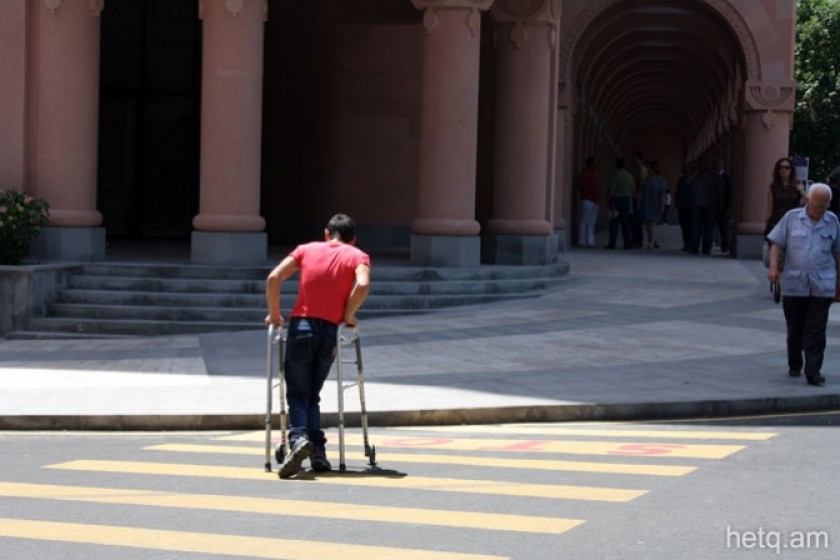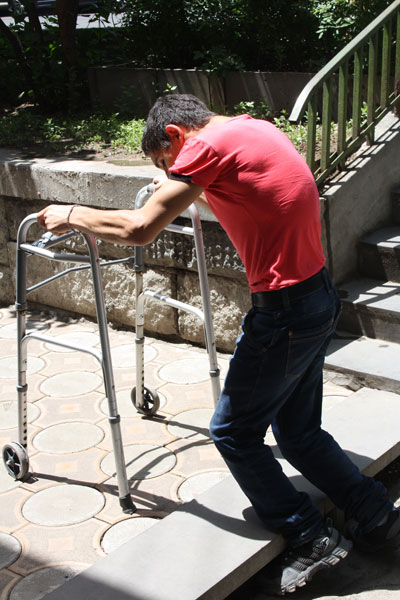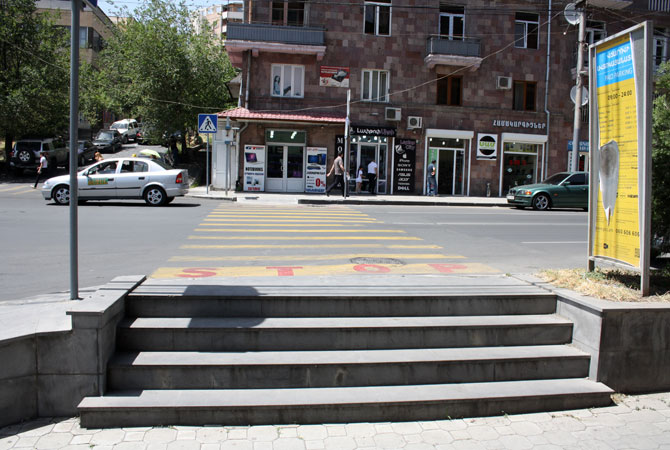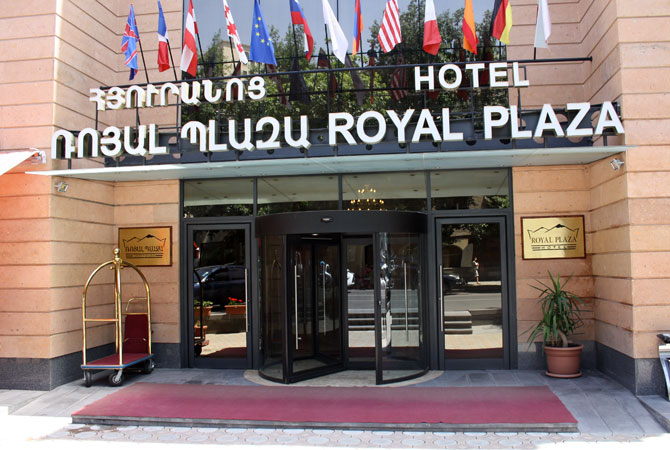
Yerevan’s Access Ramps: Many are Non-Functional and Just Plain Dangerous
I walk with 18 year-old Artak Davtyan along Saryan Street, a busy thoroughfare in downtown Yerevan.
The young man knows that Hetq wants to investigate the functionality of disabled ramps that the municipality proudly publicizes as proof that it is doing its share to make the city more accessible for those with mobility problems.
Artak has brought a walker with him, rather than a conventional wheelchair, because he says it’s much more difficult overcoming the obstacles of the street in the latter.

It soon becomes apparent that many of the ramps installed by the city are often too steep for anyone trying to get around in a wheelchair. There’s a danger that a person could tip over if they somehow pushed themselves up one of these man-made hills.
Access ramps in Yerevan are either installed with municipality funds, when streets are refurbished with government money, or by private property owners.
Since 2013, the Yerevan Municipality has installed 1,600 access ramps. In 2013, 20 million AMD (US$41,700) was allocated to install 81 ramps. In 2014, 40 million AMD was spent on 330 ramps.
In 2014, an additional 341ramps were installed when streets were renovated with funds from the national budget.
A civic initiative called “Accessible City” monitored the issue to see how the money is spent and just how functional these ramps are. Initiative coordinator Vardouhie Aramyan told Hetq that these ramps have done little to change the daily lives of those with mobility problems.
Aramyan told Hetq that oftentimes, when streets are being renovated, sidewalks are leveled off to allow for unhindered access and that such work is listed as the installation of a new ramp.
She says that the initiative’s monitoring has shown that the 68 so-called ramps on Z.Kanaker Street were photographed by employees of the municipality.
“The question arises as to what constitutes a ramp?” Aramyan asks, adding that there’s a disturbing tendency on the part of the municipality to photograph everything as a ramp and to show inflated numbers.

In 2014, two companies were contracted by the municipality to install ramps – Jemsiko Ltd. built 77 and Bidek Ltd., 253.
Bidek is wholly owned by Garnik Avetisyan, a close friend of MP Mher Sedrakyan. Jemsiko was founded by Samvel Shakaryan, who serves as company director.
This year, Bidek won a 39.1 million AMD contract to build 285 ramps by October 30.
The “Accessible City” initiative also monitored ramps installed by the private sector and found the situation to be worse yet. Frequently, the ramps themselves aren’t blocked or have been incorrectly built.
For example, there’s a drugstore on Saryan Street that has built a ramp but when one opens the door there’s a set of steps to be overcome. So, what’s the use of a ramp?

On the same street a hotel (see photo) has installed two access ramps to the main entry. One is blocked with a luggage carrier and the other with a potted plant.
 Videos
Videos Photos
Photos
Comments (1)
Write a comment